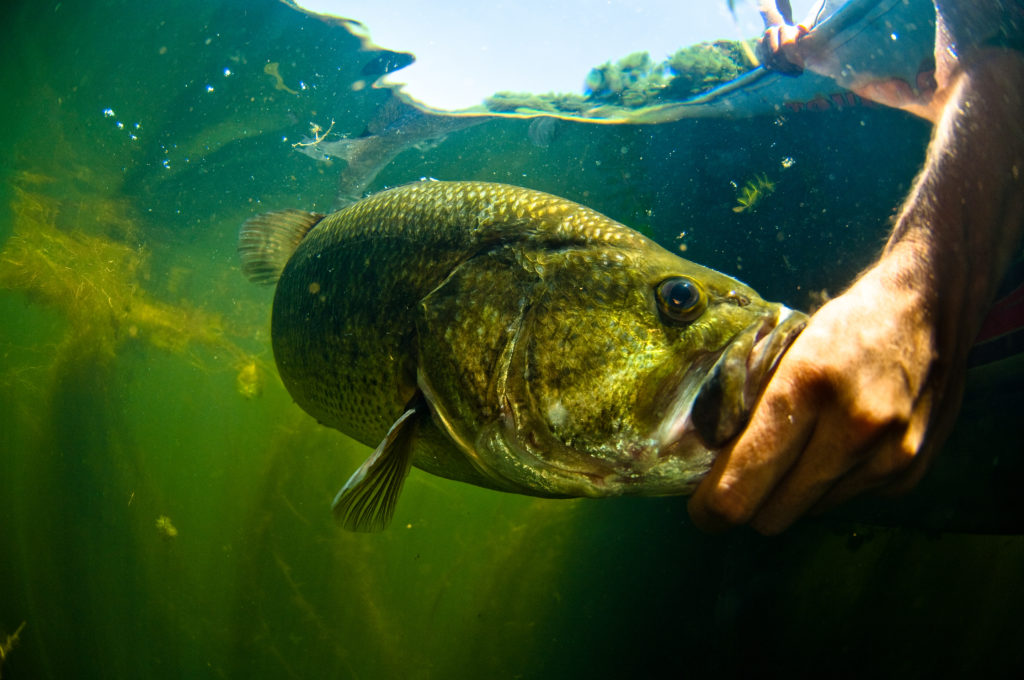
To fish for trout in a river, you need patience, the right technique and a good knowledge of the fish and its environment. If you want to know more about river trout fishing, whatever your level, this article is here to guide you. We'll look at the most effective techniques, equipment and tips to improve your chances of catching a trout in a river.
Our article in brief:
- A variety of techniques Trout fishing: You can fish for trout in rivers, mainly using a toc, fly or lure. Your choice of fishing technique will depend on the conditions and your preferences.
- Reading the riverThis is a key point in your approach to river fishing. Take time to identify the key points: riffles, beaches, pools, foliage.
- Ethics and regulation Like all species, trout are fragile fish and are subject to strict regulations. Be sure to respect the legal catch sizes. Fish responsibly! Take care of your environment and fish species.
The essential techniques for river trout fishing
Trout fishing can be practised in a variety of ways. Each technique has its enthusiasts, its advantages and its disadvantages, depending on the conditions at the time. Here's an overview of the most popular techniques for river trout fishing:
Trout fishing with a toc
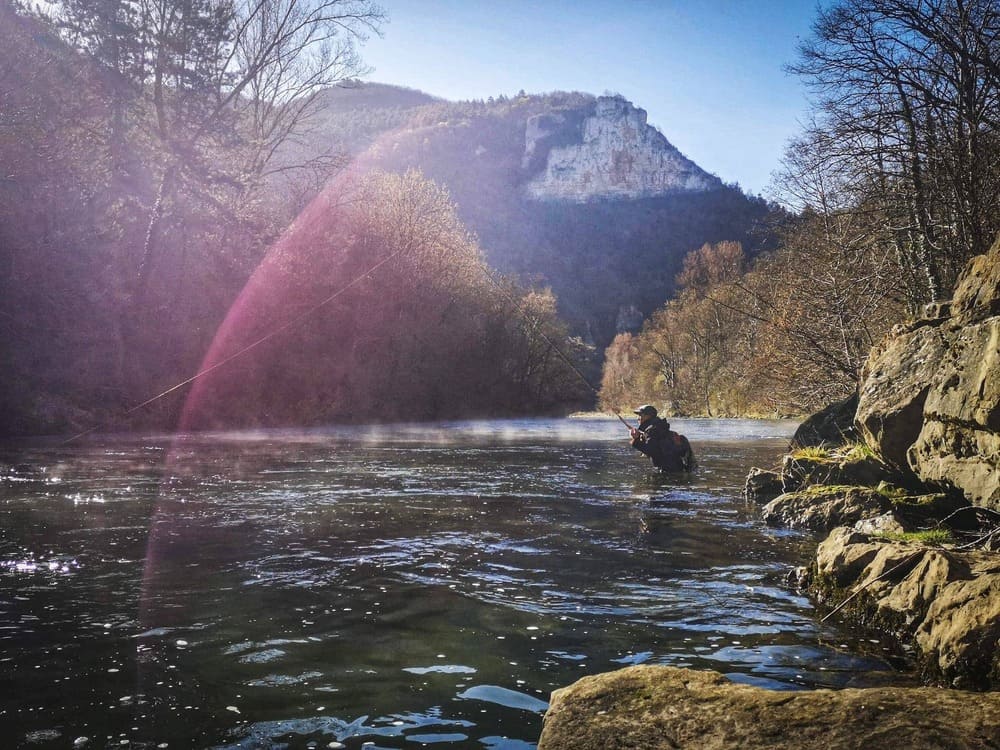
Tackle fishing is the The most ancestral and traditional technique for river trout fishing in France. This type of fishing involves letting a bait (earthworm, moth, grasshopper, etc.) drift naturally along the current. The line is made up of a mini visual marker called a rigoleto, a leader fitted with sinkers adjusted to the current and a simple hook. Like many people, this is the technique we used when we started fishing for trout in rivers. Tackle fishing is a technique particularly effective in small rivers and streams.
Trout fishing with lures
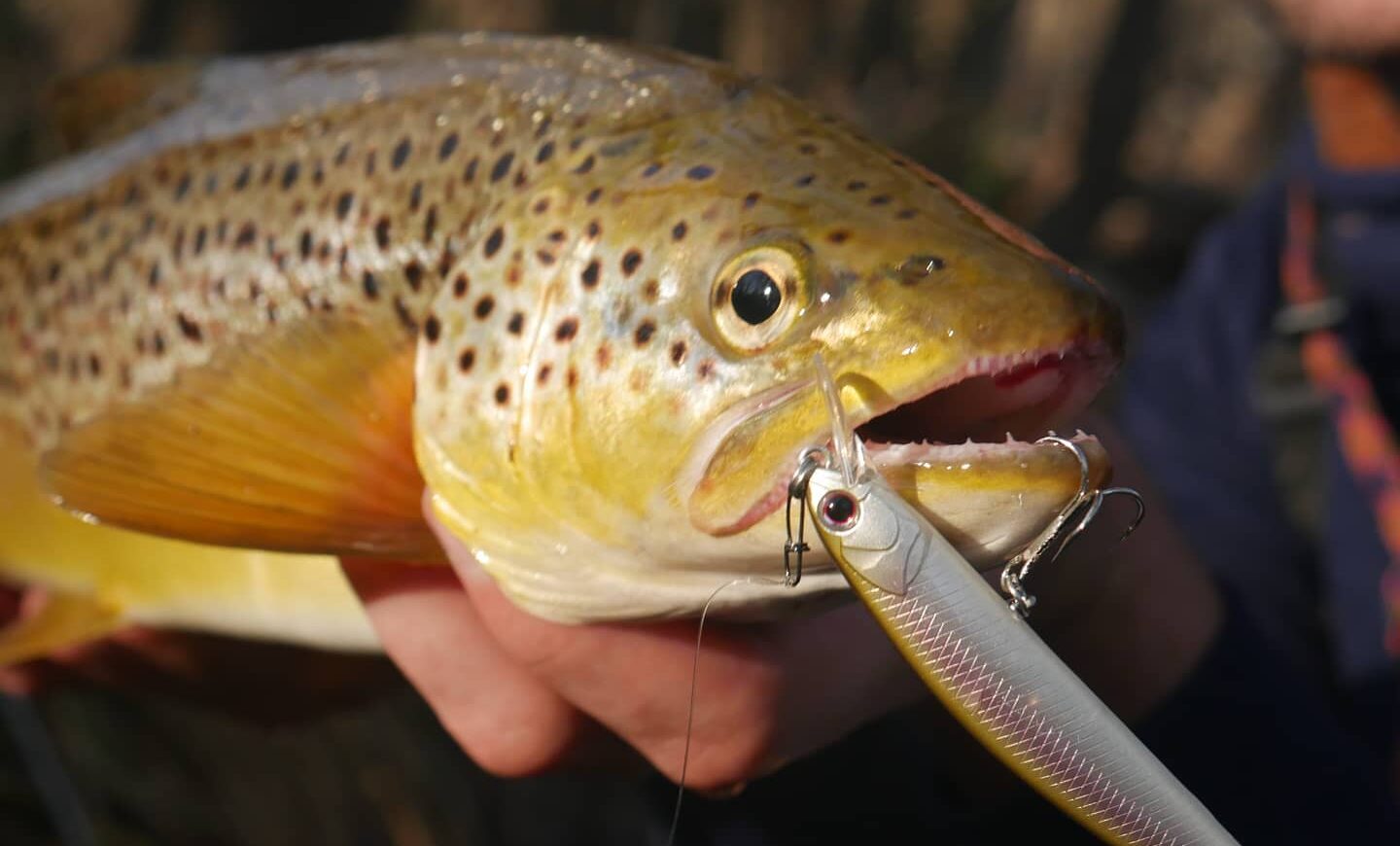
Lure fishing is a technique that allows you to prospect large areas quickly and efficiently.. The major advantage of this technique is that it A profusion of lures available on the market. Whether hard lures (jerkbaits, crankbaits, swimbaits), soft lures or spoons, all will enable you to fish for trout in rivers by adapting easily to the conditions of the environment. Here is a selection of best trout lures 2024 to help you tackle river trout fishing with greater confidence.
Trout fishing with a hand-cranked minnow
Trout fishing with a handled minnow is also an ancestral technique for catching this fish. It is fairly rudimentary and involves moving a dead minnow on a leaded metal mount. The aim is to imitate a wounded minnow. Although rudimentary, this fishing technique is a weapon of mass destruction, particularly on large trout. It is particularly formidable for river trout fishing in deeper pools and currents.
Fly fishing for trout
A true art, this technique requires finesse and a good feel for the river. It is formidable in clear, shallow water.
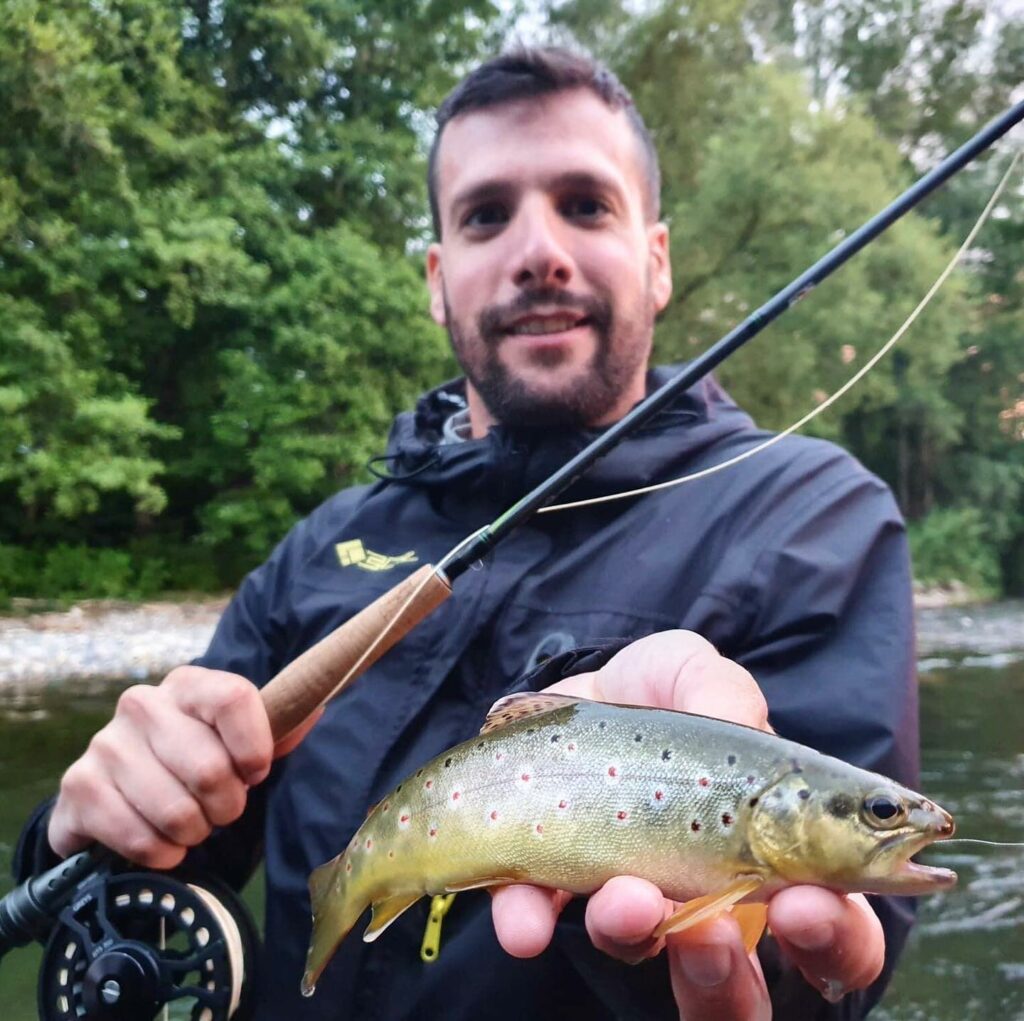
Note that Each technique is best suited to its own specific conditions. For example, in sunny weather and low water, fly fishing or fishing with small, discreet lures has often proved more productive. So here's a quick summary table to help you adapt your fishing technique to the type of river and conditions at the time.
| Technical | Type of river | Ideal conditions |
|---|---|---|
| Tackle fishing | Small rivers and streams | Clear, shallow water |
| Hand minnow fishing | Medium to large rivers | Early season, cold waters |
| Lure fishing | All types of river | Slightly tinted water, covered |
| Fly fishing | All types, especially clear water | Sunny weather, surface activity |
The essential equipment for successful trout fishing
Of course, the right tackle for the trout and the fishing technique you use is essential to maximise your chances of catching it. Here is a list of essential equipment:
| Equipment | Recommendations |
|---|---|
| Cane | - 5 metres for toc fishing - Spinning rod from 1.60 metres to 2.3 to light metres (3 to 15g) for lures depending on the size of the river |
| Reel | - Fixed or spinning reel (depending on preference and technique). Ideally, choose a reel in the 1000 to 2000 size range. |
| Line | - Nylon from 14 to 25/100 depending on the technique - Thinner leaders for greater discretion, in fluorocarbon if possible |
| Hooks | - Sizes 6 to 14 (suitable for baits, lures and trout sizes) |
| Baits and lures | - Natural: earthworms, moths, larvae - Artificial: spoons, swimming fish, streamers |

When river trout fishing, don't forget that discretion is also a key element in your approach. Choose neutral-coloured clothing that blends in with the surroundings. Avoid entering the water if possible, or do so discreetly. This will prevent you from scaring the trout away, often even into your feet.
How do you locate trout feeding stations in rivers?
River trout fishing is all about observation. In fact, before casting your line, lure or fly, take time to read the river and identify where the trout are. They position themselves in specific areas offering them both food and protection.. Here are the jobs to target as a priority:
- Inverters : These are shallow, oxygenated spots where trout usually come to feed.
- Flat and smooth These are calm areas downstream of the rapids. Trout usually come here to rest and warm up.
- The pits : These are the deepest parts of the river. They offer trout refuge and freshness.
- Coasters: These are natural shelters formed by roots and vegetation near the banks. Trout use them to protect themselves from the current or the sun, but also to lie in wait for prey.
- Obstacles: These are areas where trout can find protection from the current, shelter or oxygen: rocks, submerged trunks, etc.
So don't hesitate to insist on these promising spots. Over the course of our outings, we've mentally mapped the best spots on our favourite rivers. This knowledge allows us to quickly adapt our approach according to the conditions of the day.
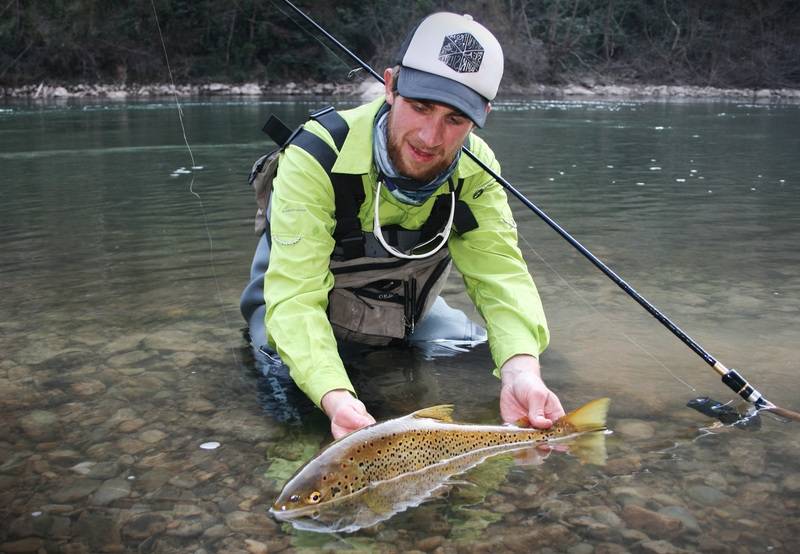
Regulations and ethics for trout anglers
Trout fishing is subject to a regulations strict. The aim is to preserve trout populations in France. The river trout fishing season generally opens in March and closes in October to protect the reproduction period.. It is essential to find out the exact dates and the rules specific to your département.
Here are a few principles to be observed at the water's edge:
- Respect legal catch sizes and daily quotas.
- Practice no-kill as often as possible to protect trout populations
- Handle your fish with care
- Use barbless hooks. These minimise injuries to trout and make it easier to unhook.
- Clean your equipment between outings to prevent the spread of disease.
- Pick up your rubbish and any other rubbish you may find at the water's edge.
River trout fishing is much more than a pastime. It's a total immersion in the heart of nature. Each session is an opportunity to discover new things, experience a new adventure and challenge yourself. Whatever your level, never forget that Respect for the environment and the fish must always take precedence over the result of your fishing..
By using the techniques we've described, choosing your tackle wisely and fishing ethically, you'll increase your chances of spending unforgettable moments by the river. Trout, that noble and combative fish, will offer you unique sensations and the satisfaction of having risen to a real challenge. So grab your rods and enjoy the fishing!



